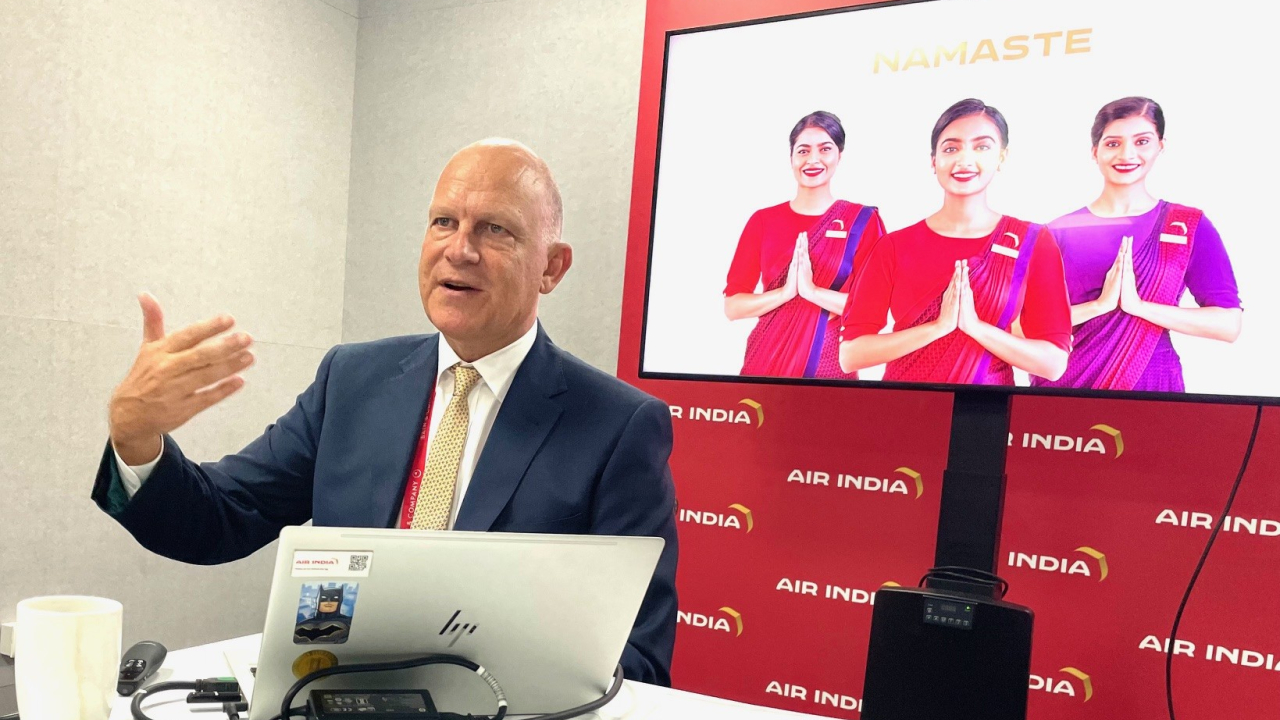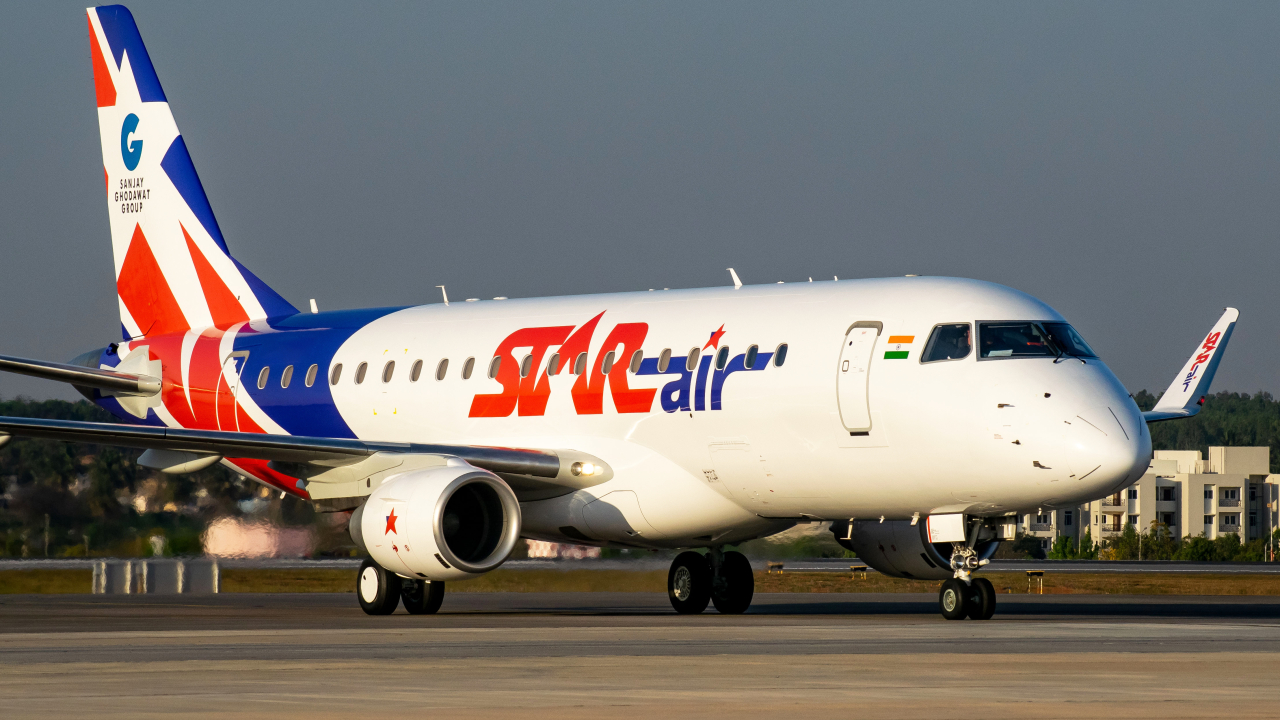Air India’s catch-up plan is bearing fruit
Air India’s transformation strategy is making sound progress on many fronts, CEO Campbell Wilson told journalists during a media roundtable at the recent IATA annual meeting in Delhi.

Air India’s transformation strategy is making sound progress on many fronts, CEO Campbell Wilson told journalists in Delhi.
He is optimistic the “India story” is only in its early chapters and that the country’s economic growth and market potential will continue to fuel Air India’s rise.
Wilson reported that Air India is increasing its market share both domestically and internationally and has seen a four-fold rise in international connecting traffic.
The carrier also backs the policy of its government to resist opening its market too fast to certain destinations, such as Dubai, giving Indian carriers time to catch-up and expand their comparatively small fleets of widebody aircraft.
“India has already opened up quite significantly to many countries. It's open skies to many of the long-haul markets,” said Wilson.
“It has been more restrictive to the neighbouring regions, for obvious reasons, because they typically have lived off the traffic that comes to and from India. That has come to the detriment of building an Indian aviation ecosystem because employment, jobs and everything else accrues to another market.”
During a media event at the IATA AGM, Sir Tim Clark, Emirates Airline President, repeated his message that India’s reluctance to liberalise its air services agreement on services between India and Dubai was harming the country’s economy.
According to Wilson: “This regime sees the value of aviation as a catalyst for economic and social development, which is why they privatised Air India.
“It's why they've put many of the airports into private concessions, so that it can be capital investment, long term strategic planning, doing things that the private sector can do better than government, and then trying to ferment the development of an ecosystem so that the economic benefit of aviation lands on Indian soil.”
There is seemingly inexorable air travel demand in India.
“It is already the third largest domestic air travel market in the world, and it is growing at 8-10% per year,” explained Wilson. “But it has a propensity to travel one fifth of that of China. So, if the Indian traveller starts traveling at the same rate as the Chinese traveller, it's going to be enormous.
“But there's also the connecting growth story of India,” said Wilson. “The number of people that fly right over the top of India, whether it be going from Australasia or Asia to Europe, from Northeast Asia to Africa, from Middle East to Southeast Asia, most of these people are connecting somewhere nearby, and there's no reason why, if we get our product and our airports and our customer experience together, they cannot transit in India too.”
“About 10% of our international load now is what we call international to international connecting passengers,” he said. “That is four times more than it was a couple of years ago. That growth is driven in part by the expansion of the network, partly by the rescheduling of flights such that they actually connect, which wasn't so much the case before, and I think it's also product upgrading.”
Air India boosted its widebody fleet over the past year with six Airbus A350-900s acquired in advance of its main A350 order in service. The delivery stream for its 50 A350s begins at the end of 2026.
Market opportunity
Asked which markets Air India will look to tap, Wilson said the opportunity is vast. “The happy problem in India is that anywhere we point an aircraft, I think we can probably fill it from a long-haul perspective, that includes North America, Europe, Australasia, many points in East Asia, even points in Africa.”
On North American network expansion, Wilson sees multiple cities in India benefitting. “We could mount service from many Indian cities to many North American points, rather than there just being a single hub operation,” he said. “And that is the plan for us in India, not just to have a Delhi hub. We are building a Mumbai hub and building one in Bangalore as well.
“At the point of Air India’s privatisation in 2022 India as a country only had 43 commercial wide body aircraft in operation,” he said. “When you look at the size of this market and the opportunity to think it would have 43 aircraft is just absurd. Singapore has 150, Dubai has 250, and so we think there's plenty more appetite for widebody aircraft.”
Today the carrier has grown its fleet to 75 widebodies with another 80 on order, added Wilson.
The carrier regularly talks to the OEMs about adding to its record-breaking order backlog but does not feel under pressure to rush any decision despite the long lead times on new aircraft. “At the moment we are comfortable,” he said.
“Our focus in the early years was early years of privatisation was really to signal the scale of ambition we had, and to pump prime the organisation with a huge amount of capacity to meet an immediate demand.
“Having done that with those 470 aircraft [placed in 2023] and then subsequently the other 100 [in December 2024], it's now about what is the organisation is going to look like in the 2030s.” That work will take a little longer to conclude, he noted.
Air India’s fleet now numbers over 300 aircraft growing to 500 plus in a few years.
The fleet growth already underway, and as more aircraft arrive, points towards Air India capturing greater market share.
The number of daily frequencies has more than doubled in its domestic network over the past 2-3 years. “We have increased our domestic market share from less than 10% to nearly 30%,” said Wilson. “On the metro routes [those between India’s major cities], which are the principal full-service routes that we're focusing on, we have a market share of around 50%.”
On international routes it is a similar story. “On short-haul international weekly frequencies have doubled, the number of routes has changed significantly, and city pairs have tripled,” said Wilson.
Air India has seen significant growth on long-haul international services, but he noted: “This has been the most constrained by aircraft. Clearly, we need more widebodies, but they are not so easy to procure. We did take in 17 in a relatively short space of time. But this is where we see a huge opportunity. Notwithstanding constraints, we still increased the weekly frequencies from 210 to nearly 500.”
Wilson was asked if there is a risk of overcapacity in the country as Air India and rival IndiGo each take delivery of about an aircraft a week for years to come.
He noted that all the usual caveats apply about not knowing what the future holds but pointed to the fundamentals of a very large market seeing GDP growth of 6.5% and air traffic growth of up to 10% likely to continue for “foreseeable future”.
“The tailwinds here are significant,” stated Wilson. “We do feel that the order book domestically can be supported. Internationally, in 2022, Indian Airlines only had an international market share of 16%. Now it's 21% but it should be in the order of 50%.”
In the past, Air India “was predominantly leisure or VFR traffic, because the product and the network wasn't very strong and because Air India didn't fly to where people wanted to go to. Premium traffic was going via somewhere else.
“As we put the network in place and build a product that people want and offer the convenience of nonstop service to more places, there'll be a shift of traffic, but also a shift of high yielding traffic back.”
“We know that there's 35 million people in the diaspora. We know the connecting opportunity because of the geography, and we know how badly India has been connected to the rest of the world from a non-stop perspective,” said Wilson.
“We think that the Air India aviation story as part of the India story, is a very compelling one.”
Stay up to date
Subscribe to the free Times Aerospace newsletter and receive the latest content every week. We'll never share your email address.

